Did you know that while most babies will experience tooth eruption between 4 and 7 months, as many as 5% may show their first baby teeth before 4 months or even after their first birthday? As a parent anxiously awaiting that hint of white in your baby’s gummy smile, it helps to know the full range of what’s normal—and what to expect in the coming months. In this comprehensive guide, you’ll discover the science behind when will my baby's first tooth appear , decode teething symptoms , and get actionable advice from dental experts to support your baby’s oral health journey.
Understanding When Will My Baby's First Tooth Appear: Fast Facts and Startling Statistics
- Key findings: Most babies experience tooth eruption between 4–7 months.
- Up to 5% may see their first baby teeth before 4 months or after their first birthday.
- Every child’s teething journey is unique, shaped by genetics, family history, and individual health.
The process of baby teeth development, known as tooth eruption , is influenced by both hereditary and environmental factors. While the average baby will start teething in the middle of their first year, it’s not uncommon for some infants to display early tooth buds or to remain toothless even after their first birthday. Pediatric dental research shows that the sequence and timing of primary teeth eruption can vary substantially—even among siblings. These differences emphasize the importance of monitoring, not comparing your child to others, and consulting a pediatric dentist if you’re concerned.

- What you'll learn in this guide:
- Average age for first tooth emergence
- Timeline of primary teeth development
- Early and late teething possibilities
- Common teething symptoms and relief
- When to consult a pediatric dentist
“The eruption of your baby’s primary teeth is as much about genetics as it is about timing—no two children will teethe exactly the same way.” – Dr. Amy Johnson, Pediatric Dentist
When Will My Baby's First Tooth Appear and What Does Tooth Eruption Look Like?
The appearance of your child's very first tooth is a significant childhood milestone. When asking "when will my baby's first tooth appear," the most common answer points to the central incisors —specifically the bottom front teeth—as the first to emerge. For many babies, this occurs between 4 and 7 months of age, often presenting with mild irritability and an increased desire to chew on soft objects. As part of the tooth eruption process, parents might notice swollen gum tissue and subtle changes in feeding habits. It’s essential to recognize that tooth eruption doesn’t follow an exact calendar template; some healthy infants may debut their first tooth ahead or behind the usual schedule.
Practically, you’ll first see a pale, swollen gum area, then a tiny dot of white as the tooth begins to break through. Each baby’s journey is different—some teething babies breeze through with minimal fuss, while others experience more obvious teething symptoms . Regardless of exact timing, this early phase of primary teeth sets the foundation for lifelong oral health. Below is an overview of the typical baby teeth eruption order and average ages.
If you're interested in more detailed guidance on how to care for your child's teeth as they emerge, including preventive strategies and when to schedule that first dental visit, our pediatric dentistry resource offers practical tips tailored for new parents.
Typical Timeline for Baby Teeth and Tooth Eruption
| Average Age (Months) | Tooth Name | Eruption Order |
|---|---|---|
| 4–7 | Central Incisors | First to appear |
| 8–12 | Lateral Incisors | Second to emerge |
| 9–16 | First Molars | Follow after incisors |
| 13–19 | Canines | Next in the sequence |
| 23–33 | Second Molars | Last to develop |
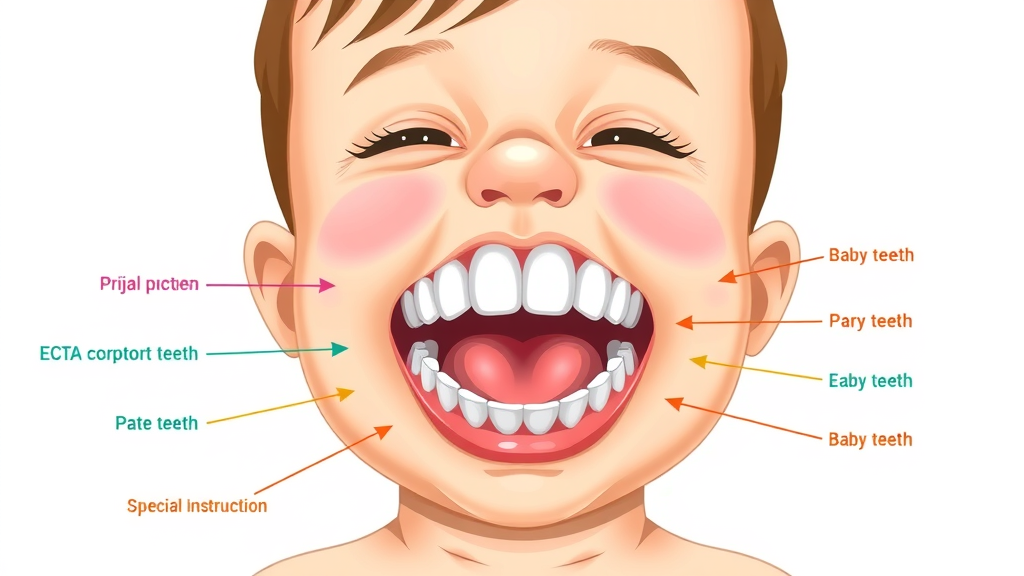
Central Incisors: The First Baby Teeth You’ll See
- Most infants start teething with lower central incisors .
- Upper central incisors typically follow closely behind.
- Variations in timing are completely normal.
The central incisor set—commonly the bottom front teeth —marks the first phase of tooth eruption . These primary teeth often break through during night hours or after feeding when gum tissues are more relaxed. Parents might note a slight swollen gum area before the tooth erupts. Soon after, the upper central incisors make their debut. Genetics, nutrition, and even parental baby teeth history can influence when your baby starts this process. Don’t be alarmed by variations; some children’s central incisors can show as late as 10 or 11 months yet still be perfectly healthy.
How Long Does It Take for a Baby's First Tooth to Fully Come In?
- After teething begins, a tooth can break through visibly within 1–2 weeks.
- It may take several months for a baby tooth to settle fully and appear as part of a full set.
Once the teething process starts and a tooth is on its way, parents can expect the first signs—such as a white spot or raised gum —to become visible in about one to two weeks. Teething symptoms like extra drooling and a fussy mood typically continue as the tooth erupts and gradually comes in. For most babies, a new tooth may take several more months to look fully grown and strong. Each tooth follows its own timeline, with some settling quickly and others establishing their place over a longer period. Throughout, gentle care of the gums and newly erupted baby teeth is critical to prevent early tooth decay .
What Are the Signs of Teething and Teething Symptoms to Watch For?
Many parents first realize their child is teething by observing classic teething symptoms . However, what’s normal can range widely from one baby to the next. Some display pronounced signs of teething , while others show hardly any at all. Recognizing which teething symptoms are typical helps you offer comfort and spot when a situation calls for a pediatric dentist .
Below, we outline both common and less frequent signals that your child is starting to teethe .
Common Teething Symptoms in Infants
- Gum swelling and redness: Especially near the front teeth or central incisors .
- Irritability: More fussiness, crying, or seeking comfort from caregivers.
- Excessive drooling: Wet shirts and chin rashes are typical as teething symptoms ramp up.
- Chewing on objects: Babies may find relief using a teething ring or grabbing everything within reach.
- Disrupted sleep patterns: Nighttime wakefulness is common during tooth eruption .
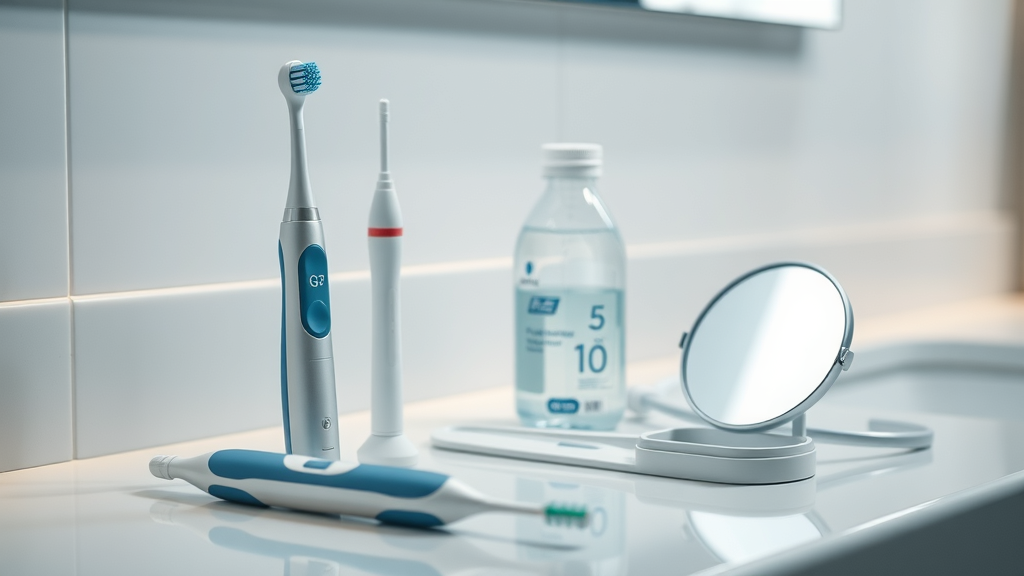
Less Common Signs of Teething
- Mild rash around the mouth: Resulting from constant drool.
- Slightly elevated temperature: Not to be confused with a true fever.
- Decreased appetite: Mild food aversions during acute discomfort.
These lesser-seen signs of teething can sometimes confuse parents. While a very mild temperature spike may accompany primary teeth eruption, a true fever, diarrhea, or persistent rash suggests another cause—and warrants a call to your health provider or pediatric dentist . Understanding what’s part of the teething process helps you offer the right support while watching for anything unusual.
When Should You See a Pediatric Dentist for Teething Pain?
- If your baby is experiencing severe teething pain , extreme irritability, or prolonged discomfort, it’s wise to book an appointment.
- If no baby teeth have appeared by 15–18 months or teething symptoms worsen, consult a pediatric dentist .
While most teething symptoms can be managed at home, a pediatric dentist should evaluate any child with ongoing pain, delayed tooth eruption , or unusual signs (such as severe gum swelling or trouble feeding). Early intervention helps ensure healthy development of primary teeth and gives you peace of mind.
“Persistent teething pain or delayed baby teeth should always be assessed to rule out underlying health issues.” – American Academy of Pediatric Dentistry
Start Teething: When Can I See My Baby's First Teeth?
The big question for many families is: “ When can I see my baby’s first teeth? ” While textbooks suggest a range, babies can start as early as 3–4 months or as late as 12–15 months. Below, discover how the timing may vary and what it means for your baby’s oral health .
Early, Late, and Typical Starters for Tooth Eruption
- Early starters: Notice teeth before 4 months.
- Late starters: No baby teeth after 12 months.
- Typical: Most babies show their first tooth between 6–10 months.

What Is The Normal Age For The First Tooth?
- Most pediatric experts reassure that the window for a first baby tooth is broad—anywhere from 4–15 months.
Pediatricians and the American Academy of Pediatrics consider it normal for a primary tooth to erupt anytime within the 4 to 15 month window. In other words, a teething baby who is toothless at 9 months is—more often than not—still on track. Genetics play as much a role as feeding choices and overall health. If there are no baby teeth by 18 months, a checkup ensures there’s no underlying issue with tooth development .
How Long Does It Take For a Tooth to Show When Teething?
- Once teething pain or gum swelling begins, the tooth may take anywhere from a few days up to two weeks to emerge, then several months to fully grow in.
Every tooth eruption phase is unique—one child’s central incisor may show rapidly, while another’s might take over a week. Monitoring the signs of teething , providing comfort, and maintaining oral hygiene are key during this wait.
Primary Teeth Development, Tooth Eruption Patterns, and The Transition to Permanent Teeth
From the first central incisor to a full set of baby teeth , understanding the pattern helps parents foresee what’s next. The order of primary teeth arrival can be predicted, although the precise pace remains individual.
Order of Primary Teeth and What to Expect
- Central incisors : Appear first, lower before upper.
- Lateral incisors : Arrive near the front teeth as the next step.
- First molars : Introduce chewing surfaces for soft foods.
- Canines : Erupt closer to the back of the mouth.
- Second molars : Complete the set of teeth by age 2–3.
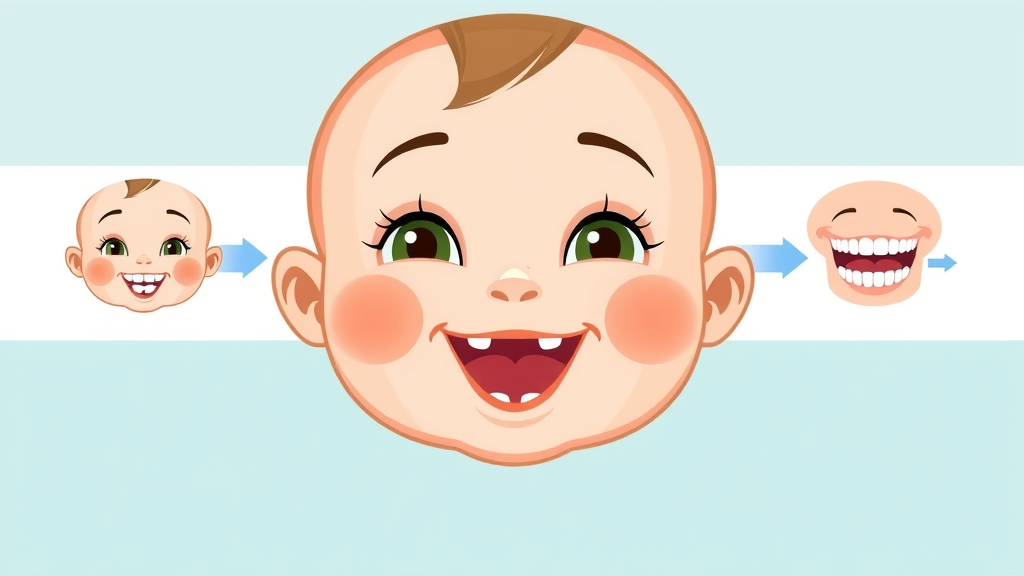
When to Expect Permanent Teeth
- Permanents teeth begin replacing baby teeth around age 6.
- Sequence: Central incisors, lateral incisors, first molars, canines, second molars.
The transition from primary teeth to permanent teeth happens slowly, with back teeth (molars) and front teeth (incisors) all falling out in a predictable order. Tracking the loss of baby teeth is as important as monitoring their debut, since early loss can affect alignment and future dental health. Routine visits with a pediatric dentist ensure everything stays on track.
Caring For Baby's First Teeth and Managing Teething Pain
Healthy baby teeth are the foundation for adult smiles. From the moment the first tooth erupts , establish habits that prevent tooth decay and minimize teething pain . Here’s how.
Teething Pain Relief: Safe Tips and Tricks
- Use of clean teething rings for chewing relief.
- Chilled (not frozen) teething toys can ease swollen gum discomfort.
- Gentle gum massages with a clean finger reduce fussiness.
- Avoid sugary liquids and topical numbing gels unless your pediatric dentist recommends them.

Dental Hygiene Practices From The First Tooth on
- Clean new baby teeth daily with a soft, moistened cloth or baby-sized toothbrush.
- Schedule a dental checkup by the first birthday or within 6 months of the first tooth eruption .
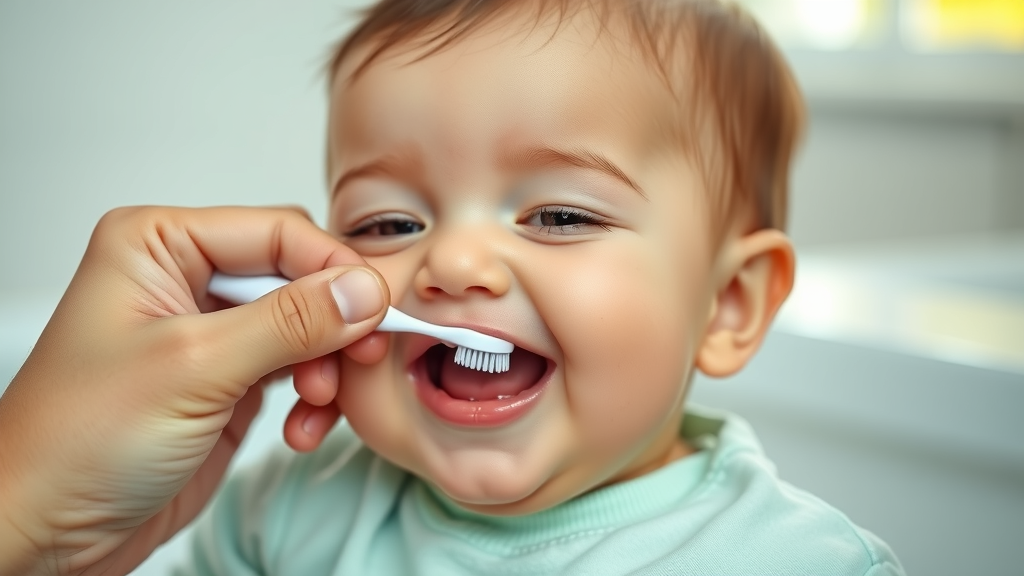
Teething Timeline: Baby Teeth Eruption Chart and Teething Ring Guidance
| Tooth | Typical Age of Eruption (Months) | Teething Tips |
|---|---|---|
| Lower Central Incisor | 6–10 | Cool teething rings, clean washcloth |
| Upper Central Incisor | 8–12 | Gentle gum massage |
| Lateral Incisors | 9–13 | Chilled teething toy |
| First Molars | 13–19 | Age-appropriate pain relief |
| Canines | 16–22 | Continue hygiene routines |
| Second Molars | 25–33 | Consult dentist if slow |
Teething Ring Safety and Hygiene Guidelines
- Avoid frozen rings —they may injure your teething baby's delicate mouth.
- Regularly sanitize all teething rings and toys.
- Monitor your baby during teething ring use to prevent choking on loose parts.
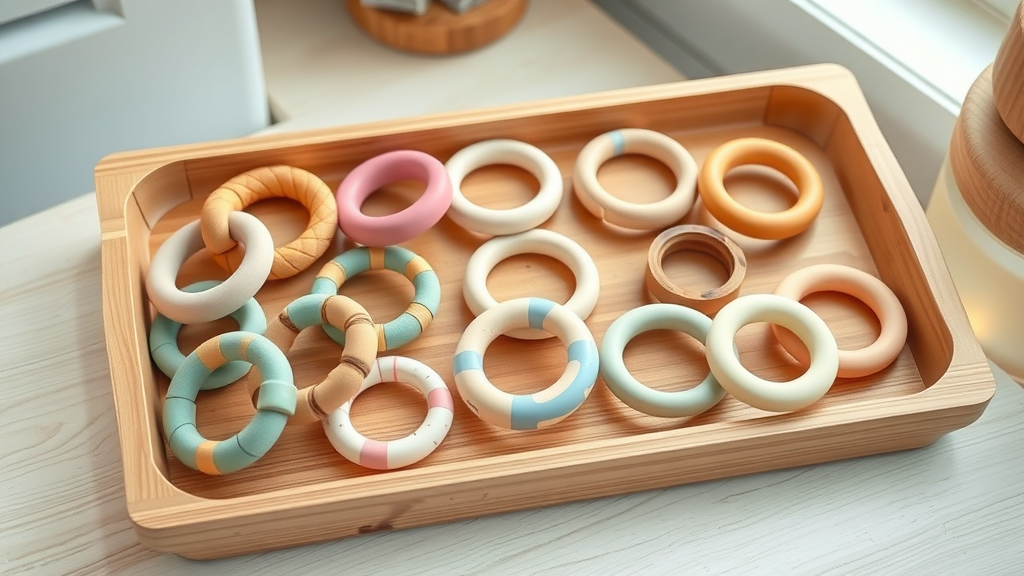
Baby Teeth Myths and Facts: Responding to Common Concerns
It’s common for new parents to fall prey to misconceptions about when will my baby's first tooth appear . Let’s set the record straight using evidence-based answers from experts in pediatric dentistry .
Dispelling Myths About When Will My Baby's First Tooth Appear
-
Myth: Late teething is a sign of developmental delay.
Fact: Genetics and family history play a far bigger role. -
Myth: Early teeth guarantee early permanent teeth .
Fact: The timeline for permanent teeth doesn’t always match primary tooth eruption.

What Is Normal and What Requires a Pediatric Dentist's Assessment
- No teeth by 18 months : Book a pediatric dentist appointment for evaluation.
- Ongoing fever or rash alongside teething symptoms : Seek professional advice.
The majority of children will navigate primary teeth eruption without problems. But vigilant parents who stay alert to outliers, such as delayed tooth eruption or accompanying illness, provide their child with the best care. Don’t hesitate to contact a pediatric dentist —the American Academy of Pediatric Dentistry recommends a dental home by your baby’s first birthday.
FAQs About When Will My Baby's First Tooth Appear
-
Is teething always painful for babies?
Not always. Some babies experience minimal discomfort, while others develop pronounced teething symptoms —such as irritability or swollen gums . -
Can teething cause fever or diarrhea?
While teething may raise body temperature slightly, a true fever (over 100.4°F/38°C) or diarrhea is typically unrelated. Consult your pediatrician for persistent symptoms. -
What if teeth appear crooked or discolored?
Most minor variations in alignment are self-correcting. Discoloration, however, could indicate tooth decay or enamel issues—schedule a checkup if concerned. -
Should fluoride toothpaste be used on baby teeth?
Yes, but in tiny amounts. Use a smear (the size of a grain of rice) for children under three to protect against tooth decay .
Key Takeaway Points for Parents Watching for When Will My Baby’s First Tooth Appear
- Every baby is unique and will teethe on their own timeline.
- Monitor teething symptoms and care for emerging teeth with gentle, consistent hygiene.
- Contact your pediatric dentist for guidance if you have any concerns.
People Also Ask: How long does it take for a baby's first tooth to fully come in?
- After initial gum swelling, it can take 1–2 weeks for the tooth to emerge and several months to fully settle into place. This duration varies based on your child’s unique oral development and the particular tooth.
People Also Ask: When can I see my baby's first teeth?
- Some babies show tooth buds as early as 4 months, but the first visible baby tooth is typically seen between 6–10 months. Wide variation is normal.
People Also Ask: How long does it take for a tooth to show when teething?
- From the start of teething symptoms to visible tooth eruption , expect a process of about 1–2 weeks. Discomfort and gum changes may begin before you see the tooth .
People Also Ask: What is the normal age for the first tooth?
- The normal range for eruption of the first baby tooth spans from 4 to 15 months, with most pediatricians seeing the debut around 6 months of age.
Partner With a Pediatric Dentist: Johnstown Dental Care Supports Your Baby’s Oral Health Journey
- For expert guidance on when will my baby's first tooth appear , identifying teething symptoms , and establishing positive dental care routines from infancy through adolescence, contact Johnstown Dental Care at 370 West Coshocton St. Johnstown, OH 43031. Phone: (470) 967-6046. Visit www.johnstowndentalcare.com . Proudly serving Johnstown, New Albany, Granville, Alexandria, Pataskala, and all surrounding areas in Licking, Franklin, and Delaware Counties.
Ready to take action? Monitor your child’s teething journey , establish healthy dental routines, and reach out to your pediatric dentist for support when needed.
As you continue to support your child’s oral health, you might be curious about the full spectrum of dental services available for families in your area. Explore the comprehensive dental care options at Johnstown Dental Care to discover how you can nurture healthy smiles from the very first tooth through every stage of life. Whether you’re seeking preventive care, restorative treatments, or advanced pediatric solutions, our team is here to guide your family every step of the way.
Sources
- https://www.aapd.org/research/oral-health-policies--recommendations/baby-teeth-care
- https://www.ada.org/resources/research/science-and-research-institute/oral-health-topics/baby-teeth
- https://www.cdc.gov/oralhealth/basics/childrens-oral-health/index.html
- https://www.healthychildren.org/English/healthy-living/oral-health/Pages/Teething-and-Dental-Care-for-Infants-and-Toddlers.aspx
 Add Row
Add Row  Add
Add 




Write A Comment